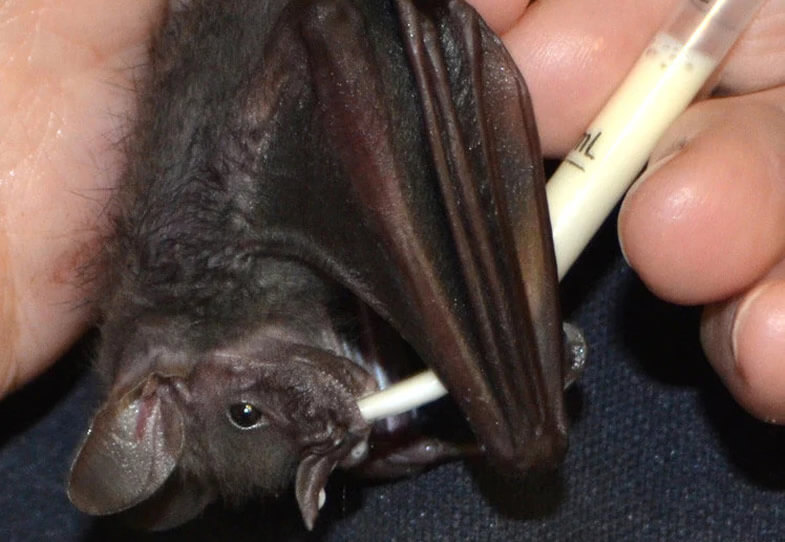Tinkerbell, a Jamaican fruit bat, is a sweet-natured and endearingly odd little bat. She was born on October 3rd, 2013. To know her, you’d never think that her coming into the world had been so heartbreakingly grim.
Her mother was one of the many unfortunate bats that had become ensnared in the exotic pet trade, where bats inevitably live short lives of loneliness and terror. Like so many others in her predicament, Tinkerbell’s mother languished in captivity wholly unsuited for bats and eventually died giving birth to her daughter. When Tinkerbell arrived at Bat World Sanctuary, she was, as is sadly common for bat pups whose mothers have died in childbirth, still clinging to her mother’s body.
Thankfully, things took a turn for the better; her owner, likely looking for ways to care for a newborn bat, came across Bat World’s Facebook page and learned how hard a pet’s life is for bats. It was too late for Tinkerbell’s mother, but not Tinkerbell herself, and the owner delivered the newborn to Bat World Sanctuary and asked us to keep spreading the word about keeping bats as pets. Were it not for her owner’s kind heart and willingness to admit she’d been wrong, Tinkerbell likely wouldn’t have made it either.
Tinkerbell was hand-raised at Bat World and has grown into healthy and slightly eccentric adulthood. For whatever reason, be it her traumatic entry into the world or simply her odd little personality, she insists on roosting and eating by herself in the “bat hut” that serves as the halfway house for new arrivals. The bat hut is meant as temporary security for orphaned bats who are learning to adapt to the flight cage, but Tinkerbell has made it her permanent home. It’s not that Tinkerbell fears the other bats; she plays and flies alongside them nightly, and even enjoys visitors that pass through her bat hut. Tinkerbell simply values her solitude.
Since deciding to call the bat hut her permanent home, Tinkerbell now serves as a welcoming committee to newly arriving bats. She allows youngsters to roost and cuddle with her inside the bat hut, and in doing so eases their transition to the hubbub of the flight cage.
In the wild, her solitary nature would deny her the protection of numbers and could put her in danger, but here at Bat World, she has a place all her own. And if she wants company, there are over a hundred of her best friends just a wing flap away. We may not know why she lacks some of the social impulses, but one thing’s for sure, her days of suffering and loss are over.


